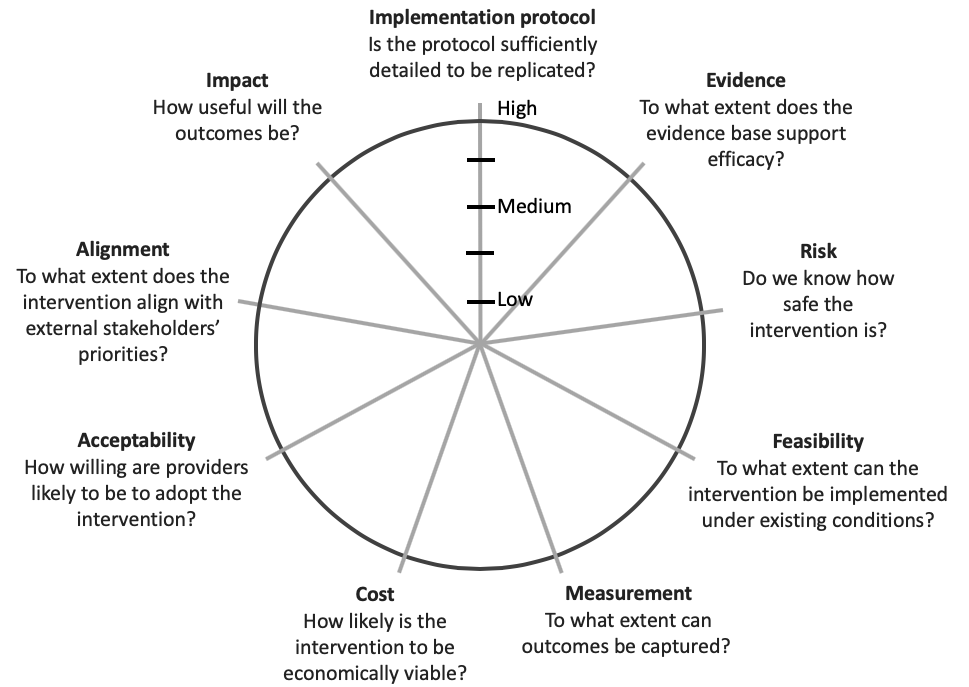
The Q&I team helped to create the Readiness Assessment for Pragmatic Trials (RAPT) model, for research teams to assess an intervention's readiness when deciding whether and how to proceed with a pragmatic trial (2019 paper).
We developed RAPT based on expert input from a 2017 National Institute on Aging workshop held, in part, to identify the criteria necessary for an intervention to be successful in a pragmatic trial (2018 paper).
The model includes nine domains that reflect a range of considerations regarding the feasibility of successfully employing pragmatic methods and the prospect of an intervention’s widespread adoption, if effective: implementation protocol, evidence, risk, feasibility, measurement, cost, acceptability, alignment, and impact.
People evaluating an intervention are asked to qualitatively assess each domain from low to high readiness. This may help a team to identify preliminary work necessary to prepare for a pragmatic trial (such as creating an implementation guide or engaging stakeholders) or to design a trial that is more explanatory than pragmatic in some aspects (such as measurement). We suggest graphically summarizing the assessments, as is done in the PRECIS-2 model, to visualize an intervention's relative strengths and weaknesses.
Related resources include:
- A paper describing RAPT
- A scoring worksheet
- A graphical summary wheel
- Eric Jutkowitz's recorded seminar on RAPT (29 Oct 2019)
- Eric Jutkowitz & Rosa Baier's IMPACT Collaboratory Grand Rounds presentation on RAPT (11 Nov 2019) and follow-up podcast (12 Dec 2019)
Have you used RAPT? Contact us with questions or to share scored interventions that we may use as examples.
